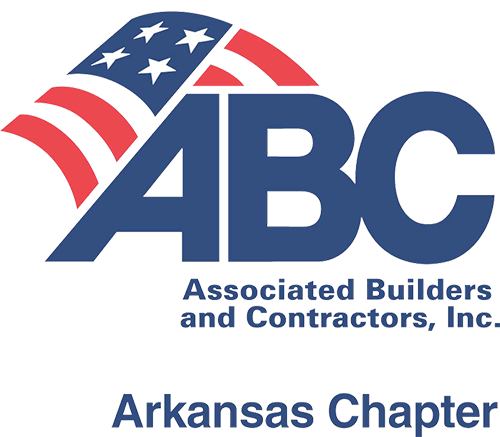It’s definitely unsettling when you unplug your phone charger or vacuum cleaner and notice the electrical outlet feels warm, or even hot, to the touch. Your home should be a place of comfort and security, and an unexpectedly hot outlet can certainly disrupt that peace of mind.
Here at Staley Electric, we understand that dealing with electrical issues can be confusing and sometimes a bit scary. We also believe that knowing what’s happening with your home’s electricity is the first step towards maintaining a safe environment for you and your family. That’s why we’re here to explain the common causes of a hot outlet so you can take appropriate action if you notice it in your home.
Questions? Don’t hesitate to reach out! Our friendly electricians are here to provide answers. We’re also the ones you can count on for all of your electrical service needs. From switch and outlet repairs to panel upgrades and more, we’ve got you covered.
Common Reasons an Electrical Outlet Gets Hot
Plenty of things can cause an outlet to heat up. In some cases, the problem stems from what’s plugged in. Other times, the wiring hidden behind the wall carries the blame. Being aware of what might be going on can help you figure out your next steps without guesswork.
Overloaded Circuits
Many people rely on outlets to do more than they were built to handle. It might start with plugging a few extra things into a power strip, then adding another extension cord for convenience. Before long, the circuit connected to that outlet carries a higher electrical load than it should. That extra demand can strain the wire and make it heat up. When too many devices compete for power, even the best surge protector won’t always prevent a problem.
Another clue? If your circuit breaker trips often when that outlet is used, there’s a good chance it’s being overloaded. Over time, repeated overloads can damage the wire inside the wall and make the outlet feel hot to the touch.
Loose Wiring
Behind your outlet, copper wire connects to the terminal screws. These wires must stay tightly secured to keep the electricity flowing without resistance. If one of those wires comes loose or shifts over time, resistance builds at the connection point. That resistance generates heat, which can cause the outlet to feel warm or even hot.
Loose connections often happen in older homes or places where outlets have been frequently used. The outlet might still seem to work normally — until you notice the faceplate getting warmer than expected. This kind of heat isn’t safe, especially if the wires start to arc or spark.
Damaged or Worn-Out Outlets
Outlets don’t last forever. As the components inside start to wear down, they lose the ability to manage the flow of electricity the way they should. Plastic parts may crack or become brittle, and contact points inside can loosen or corrode. When that happens, the electricity doesn’t flow as cleanly. Instead, you get small pockets of resistance, and with resistance comes heat.
Outlets can also become damaged if something gets spilled near them. Water and electricity don’t mix, and even a little moisture can create heat or trigger a short circuit. Damaged outlets often show signs like scorch marks, a burned smell, or melting around the edges.
Faulty Devices or Appliances
Sometimes the issue isn’t with the outlet itself — it’s with what you’ve plugged into it. Devices with internal problems may draw irregular amounts of voltage or send power surging back into the outlet. That irregular flow can cause the outlet to overheat, even if everything behind the wall looks fine.
Appliances like space heaters, microwaves, and hair dryers often cause this kind of issue. If one device causes an outlet to heat up, but another doesn’t, the appliance might be the source. Heat can also come from transformers in older electronics that struggle to manage their draw.
Improper Installation
If an outlet wasn’t wired correctly during installation, problems can show up down the road. Sometimes, the wire doesn’t match the electrical load. Other times, the outlet might not be grounded properly. Without a solid connection to the ground, excess heat has nowhere to go and ends up sitting in the outlet.
Incorrectly wired outlets may also lack the right fuse or switch placement. Even if everything looks normal from the outside, the wrong configuration inside the box can throw the whole circuit out of balance.
Why a Warm Outlet Is a Warning Sign
A warm outlet isn’t something to brush off. It usually means something is interrupting the clean flow of electrons through your circuit. Even a slight rise in temperature should prompt you to stop and take a closer look. A warm outlet might not feel dangerous, but heat means energy is going somewhere it shouldn’t.
Left unaddressed, that heat can melt the insulation on the wire or warp the outlet casing. Eventually, it can cause a short circuit or start a fire behind the wall. Heat often builds slowly, which gives you time to catch it if you know what to watch for.
Immediate Steps You Should Take
When you notice a hot outlet, it’s smart to act quickly. You don’t need to panic, but taking the right steps early can prevent damage or danger. A calm, careful approach can help protect your home and your devices.
Here’s what you should do:
- Unplug Devices: Carefully unplug any cords or devices connected to the hot outlet. If the plug itself feels hot, use caution, perhaps protecting your hand with a cloth.
- Stop Using the Outlet: Do not plug anything else into this outlet until it has been inspected and deemed safe by a professional.
- Check the Circuit Breaker: Go to your electrical panel and see if the circuit breaker controlling that outlet has tripped. If it has, do not simply reset it and continue using the outlet. A tripped breaker is a sign that the circuit was overloaded or experienced a fault.
- Assess Other Outlets (Cautiously): If it’s safe to do so, you can very carefully check if other outlets in your home, particularly those on the same circuit, are also warm. This can help determine if the issue is isolated or more widespread. Avoid touching any exposed metal.
- Call a Licensed Electrician: Contact a qualified electrician, like our team at Staley Electric, as soon as possible. Explain the situation so they understand the urgency of the inspection needed.
How Our Licensed Electricians Can Help
At Staley Electric, our licensed electricians know how to handle hot outlets with experience and attention to detail. When you call us about heat coming from an outlet, we start with a thorough inspection. Our team uses professional-grade tools to test voltage, check for damaged wire, and look for signs of strain in the electrical load. We don’t rush through quick checks — we take the time to understand what’s really happening behind the wall.
That means we examine how the circuit behaves, how the outlet was installed, and how everything interacts with connected devices. If a loose wire, outdated component, or short circuit is part of the problem, we’ll find it. We’ll walk you through the findings clearly, with no pressure or technical jargon. Whether a repair, replacement, or upgrade is needed, we’ll handle it with care and make sure your home feels safe again.
Ways to Prevent Future Outlet Problems
Taking proactive steps can significantly reduce the likelihood of encountering issues like hot electrical outlets in the future. Consider incorporating these preventative measures into your home maintenance routine.
- Avoid Overloading: Be mindful of how many devices, and what type, you plug into a single outlet or circuit. Distribute high-power appliances across different circuits. If using a power strip, opt for one with a built-in surge protector and understand its load limits.
- Inspect Cords and Plugs: Regularly check the cords and plugs of your appliances and electronics for any signs of wear, fraying, or damage. Replace any damaged cords promptly.
- Upgrade Old Outlets: If your home is older, consider having your outlets, especially those that are visibly worn or loose-feeling, inspected and potentially upgraded by an electrician to improve accessibility and capacity.
- Schedule Electrical Inspections: Periodic electrical safety inspections by a qualified electrician can identify potential problems, like aging electrical wiring or overloaded circuits, before they become serious hazards. This is particularly important for older homes or if you’re planning renovations.
- Manage Your Electrical Load: Understand the general electrical load your appliances consume. Try to avoid running too many high-consumption items simultaneously if you suspect your circuits are near their capacity.
- Use Extension Cords Temporarily: An extension cord should be a temporary solution, not a permanent wiring fix. If you need more outlets, have an electrician install them.
- Proper Dimmer Switch Use: Ensure any dimmer switch is rated for the type and wattage of the lights it controls and is installed correctly. A mismatched or improperly installed dimmer can generate significant heat.
- Protect from Water: Keep all electrical outlets, plugs, and devices away from water sources to prevent short circuits and electrocution risks. If an outlet is near a water source, it should be a GFCI outlet.
- Consider Arc-Fault Circuit Interrupters (AFCIs): These devices can detect dangerous arcing conditions, which can cause heat and fires, and shut off the power. They offer an advanced level of protection beyond a standard circuit breaker or fuse. A new transformer might be needed in some system upgrades.
Call Now for More Electrical Safety Tips & Services
Your safety is our top priority at Staley Electric. A hot electrical outlet is a clear signal that your electrical system needs attention from a professional. Don’t hesitate to reach out to us if you notice this or any other electrical concern in your home. Our experienced electricians are ready to provide a thorough inspection, identify the cause of the problem, and implement the necessary repairs to keep your home powered safely. We are also happy to offer more electrical safety tips and discuss services like installing a surge protector for your whole house or upgrading your circuit breaker panel.
Contact Staley Electric today for peace of mind and expert electrical service. We’re here to help you understand your home’s electricity and maintain a safe environment for everyone within it.







